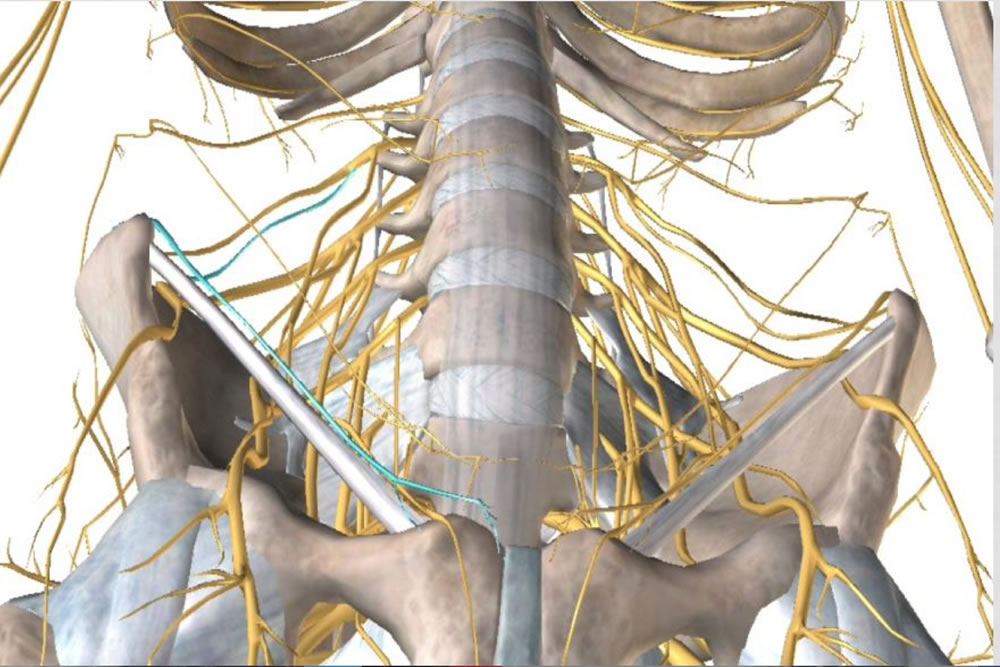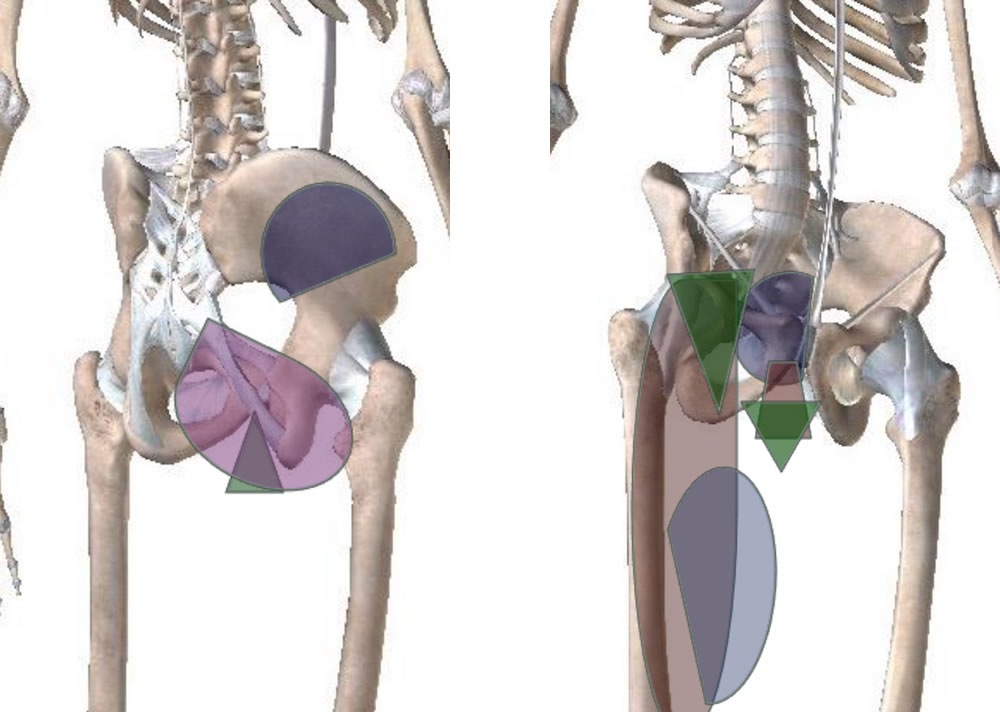CiONE BiOPELVIC RELEASE
Utilised with Patients Suffering from Chronic Pelvic Pain
The initial focus of the treatment is to create a sensation within the body of ‘moving’ the pain and creating ‘change’.
This is essential to begin the journey back to health and becoming ‘pain free’ and the basic BiOPelvic principles of therapy will start this process, ie; a basic 1st Tier ‘Amatsu’ release, involving ‘accu-pressure point’ therapy and Physiotherapy ‘triggering’ techniques.
The body – through the multi layering of the fascia and the nerves needing to ‘slide and glide’ within the fascia to remain healthy – secretes an initially microscopic fluid that begins the process of ‘sticking the fascia’ to cause inflammation and pain.

This fluid known as ‘Paniculosis’ – initially ‘sticks’ the fascia over time – (if not drained away), and it then can cause trauma if left to continually build up and congeal over time.
In this case within the Dynamic Muscles of the Gluteals etc, the fluid balls can grow to a reasonable size (small Pea) within the multi layers of the fascia within the pelvic area, especially around the Levator Ani, Perinium and the insertion point between the Groin and Adductors.

If the patient is suffering from regular UTI’s and bladder discomfort, (be it urgency or stress incontinence), the ‘Paniculosis’ normally builds up and gathers around the pubic bone and where the Linea Alba inserts into the Urethral area.
Indeed the more Hyper-mobile the DNA of the body type, the more the water retention builds and congeals…
However once the Amatsu therapy and the BiOPelvic approach is completed the ‘Pain’ starts to move/shift, and the body begins its journey back to recalibration and calmness.
Often this initial technique on its own will eradicate the intense pain being suffered by the patient.
The connective Tissue Fascial restrictions of the Perineal and Abdominal area – in turn will disperse Abdominal and Pelvic floor tensions; encouraging relaxation of the muscle groups – allowing the Pudendal, Cuneal, Femoral and Sciatic nerve to de-impinge and recover.
Therefore, releasing the deep ‘connective tissue’ Spasms – using the CiONE “release” techniques – are the only way – (in our opinion) – to ensure that the Myofascial spasm has completely been eradicated…
There are Six key DYNAMIC AREA’s that effect the ‘intrinsic’ muscle groups, beneath the Global muscle ie; ‘Glut Maximus’, which in turn are situated around the Gluteal/Pelvic area. These Intrinsic muscles are the main ‘protagonists’ of the ‘Physical Restriction’ – when a deep Myo-fascial spasm has occurred. Each one of these ‘intrinsic muscles’ – effect and tightening one or more of the dynamic Global muscle groups.
All these potential connective tissue spasms can cause impingements of the Sciatic, Femoral, Cutaneous and Pudendal Nerves. We find that the “practical application” of the brains ‘proprioception’ – responding to the deep connective tissue ‘spasm’ and ‘trauma’, that ignited the Vagus nerve, creates what we would call “Drivers’ and these ‘Drivers’ – especially in the field of ‘Chronic Pelvic Pain’ are usually one of the following:
SEVEN MAIN ‘DRIVERS’ FOR PELVIC PAIN
1. The Myofascial connective tissue spasm
2. Aggressive “Plantar flexed” posture/skeletal dysfunction ie; an anterior tilted and/or torsional pelvis
3. “Paniculosis” building up within the facia of these global muscles
4. The Linea Alba tightening between the Solar Plexus and the Urethra/Pubic Bone
5. “Pelvic Paniculosis’
6. ‘Diaphragm Paniculosis’
7. ‘Coccyx Trauma’
The ancient therapy of Amatsu plays a major part in each and every treatment – essentially unblocking the energy within each muscle group, which relaxes the muscles and in turn allows the skeletal structure to realign; thus allowing the tensions within the pelvic floor to subside.
